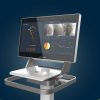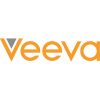At some point since the start of the pandemic, a movement has been underway among seasoned professionals and experts across the life science sector. Sharing their expertise on LinkedIn has become a critical success factor, rather than a distraction. Nonetheless, LinkedIn is still a mystery for many MedTech professionals.
For a marketing professional like me, being actively engaged on LinkedIn is as natural as breathing. However, explaining the value of spending time on LinkedIn to many MedTech professionals is a little like trying to explain a flatscreen TV to a cave dweller.
Sure, they nod politely, and some are curious to know more. However, the vast majority still think of LinkedIn as a place to look for jobs, find new talent, or as a replacement for the phone book. Furthermore, only some have mastered optimizing their profile or posting content so that others will see it.
Even rarer are those who appropriately share their expertise and other helpful resources with the rest of the MedTech world. For those interested in building their personal brands or promoting their expertise, the question is, what does LinkedIn savvy look like for MedTech?
“I’m a Bit of a Scientist Myself”
As a marketer who has spent his whole career in and around the MedTech and pharmaceutical sectors, I set out to answer that question by gathering data.
I soon discovered that aside from a handful of very high-level stats that online marketing gurus throw around about LinkedIn being responsible for a more online business than all the other social media platforms, there is little data and certainly no benchmarks for MedTech. In addition, using any sort of technology to monitor LinkedIn is strictly prohibited by Microsoft.
Not only that, none of the LinkedIn search tools, including keywords, Boolean, hashtags, or even Sales Navigator, could answer simple questions, such as what’s trending in MedTech on LinkedIn, or who has the most followers?
So, I started digging, counting, and manually tracking who had the most followers, how frequently they posted, and how many reactions and comments their posts got. I looked at their company sizes, resources, and, most importantly, their engagement. I also looked at what kinds of content people were spending time with.
I noticed that about a dozen people regularly shared MDCG guidance documents and other helpful resources—people like Stefano Bolletta (>30K followers) and Martin King (>14k followers). I saw that some of the documents they shared would get hundreds of reactions, and then I started to look at the people reacting to their posts.
That’s when things started to get interesting.
The 12 LinkedIn Archetypes
Once I connected with a handful of people with many connections, patterns, and types. I developed the 12 LinkedIn archetypes, among which consultants, recruiters, sales pros, and connectors were the most active. Then came the CXOs, founders, and thought leaders, who were often the face of the brand or the cause.
I tried to characterize the posting behavior for each archetype and highlight the growth opportunities. Then I decided to take that further and find real-life examples of each archetype. From there, 25 MedTech Leading Voices to Follow on LinkedIn (2023) was born.
Characteristics of Leading Voices on LinkedIn
I performed profile reviews with more than 60 MedTech professionals, and I learned an important lesson. You should always look at your profile from the perspective of the audience you want to attract. Can they connect with you? Would they hire you? Would they be interested in working with you?
To then understand how these leading voices were building followers and engagement, I connected with a handful of people with high levels of engagement, who fell within these archetypes. Within each group, there were different strategies and philosophies. MedTech sales and marketing superstar Omar Khateeb (>30k followers) was explicit about his frustration with his peer’s outmoded approach to selling. “I want to change how we sell and market in this industry,” said Khateeb. “You have to productize yourself as a salesperson. After all, the reason they’re taking the meeting is really you, right?”
At the other end of the spectrum, scientists, experts, and regulatory professionals, including veteran IVD experts Carlos Galamba (>2.4k followers) and Robert Kovelman (>1.2k followers) worry they’ll lose credibility with their peers if they’re seen as self-promoters online. They instead focus on sharing educational information that highlights their expertise. Both acknowledged that a lack of online presence can be detrimental to individual’s companies and careers, and the MedTech community as a whole, as nonprofessionals will fill the gap of missing knowledge.
Michelle Lott, a consultant, and coordinator for the Regulatory Affairs Professional Society (RAPS), who has embraced LinkedIn, often posts helpful resources in various forms, such as videos, podcasts, and light-hearted memes. Her posts provides a clear-cut and refreshing perspective in an area full of complicated terminology that can sometimes be difficult to understand.
For Lott, being outspoken on LinkedIn has had a direct and measurable impact on her business, with 90% of new clients originating from LinkedIn. “People often refer clients to me because of something they saw on LinkedIn,” she said. “Due to the nature of social media, those referrals carry the same weight as a personal referral because people feel like they know me from my posts and our connection on the site. So, what started as social media connection becomes a word-of-mouth recommendation.”
After speaking with these professionals, I identified the profile and posting characteristics of those leading MedTech voices. They each stood out in some (but rarely all) of the following ways (in no particular order):
- Ample Followers. It’s challenging to demonstrate authority on a topic if nobody is following you, so having a fair amount of followers or connections is essential.
- Delivering Value. When I search for Leading Voices, I look for those who are providing real value to the MedTech space instead of simply making it noisier.
- Distinctive Tone. Does the voice stand out from its peers? Are their posts of a higher quality than average? Is the value they provide different than that found elsewhere?
- Fair Representation. I considered diversity and inclusion—both in terms of demographics and the archetypes mentioned above—when selecting Leading Voices.
- Appropriate Promotion. LinkedIn is a great place to promote yourself, but individuals who focus solely on pushing their own products and services do not get high engagement.
- Bring a Little Excitement to the Table. Get creative. Post a selfie for a change.
- Stories that Evoke Emotion. Share your successes in the face of failure and learning opportunities that come from adversity. Don’t be afraid to show a little vulnerability.
- Be an Engaging Member of the Community. LinkedIn is a transactional platform and a place to build strong bonds and relationships. It’s about being a part of something larger than yourself. The MedTech community has so much to offer, be bold in sharing your wisdom and know-how.
Together, we can make LinkedIn a kinder, more interesting place, while increasing the quality of information coming from the MedTech industry.







